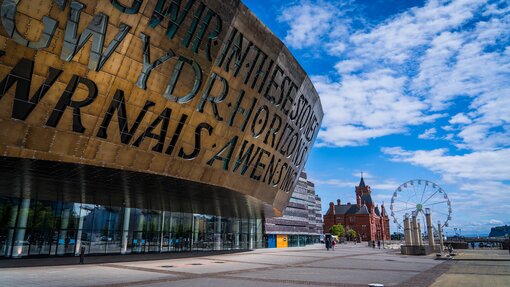
What is a Leased Line?
So, what is a leased line?
A leased line, or Dedicated Internet Access, provides exclusive connectivity to the organisation paying for it, removing bandwidth contention and all but guaranteeing your Zoom won’t cut off halfway through and your Google Docs are safely saved.
It’s ‘leased’ because it’s rented directly (and solely) to the user from the ISP. It’s a ‘line’ because we still use much the same connectivity terminology as we did when telephones first became a thing and lines were hung from pole to pole across towns.
The lingo might be long-established, but the tech is less-so (although it’s very much tried and trusted!). While traditional leased lines used twisted pair copper cables, today’s leased lines tend to run on high-capacity fibre optic cables.
An increasingly common - although lesser known - method for installing leased lines is microwave links. These point-to-point connections are especially beneficial when laying physical cables is impractical or the line needs to be in quickly.
What is the difference between broadband and a leased line?
Unlike broadband, you don’t share your leased line connection with anyone else. So your connection doesn’t slow down at peak times and data transfer isn’t interrupted by other users. The speed you pay for is the speed you get.
What are the benefits of a leased line?
SLAs: One of the huge benefits of a leased line is that it comes with fault fix SLAs. 99.99% uptime means nothing the 0.01% of the time it’s down and you’re struggling to get back online.
Security: The physical infrastructure of leased lines is less accessible to unauthorised individuals, making physical tampering difficult. Businesses can apply their own security protocols, providers can implement robust security measures, and encryption and backup options can be tailored.
Symmetrical speeds: Symmetrical speeds provide predictable and reliable performance without the fluctuations seen in asymmetrical connections. This consistency is crucial for businesses that depend on stable connectivity to operate.
Total reliability: Leased lines typically come with a 99.99% uptime SLA, we take this a step further with our Always-On backup connection, providing a guaranteed connection 100% of the time.
Are there any disadvantages to a leased line?
It all comes down to what you’re looking for. With average prices for 100Mb coming in at around £233.33 / month in London and £248.50 / month in Manchester, cost can be an issue for smaller businesses.
At Telcom, our leased line rates are around 18% less (conservatively) than that average. However, if you’re not heavily reliant on data or connectivity day to day, and you’re mainly using the internet for a POS connection and customer WiFi, you won’t need a leased line anyway.
Which leads us to over-provisioning. Leased lines provide a fixed amount of bandwidth, which can lead to over-provisioning if it’s not consistently used. There are three ways to avoid this.
Assess upfront. Work with a provider that can help analyse your network traffic to understand usage patterns and make an informed decision about required bandwidth. A good ISP can make it scalable, so they won’t be overselling you upfront. Our build-once philosophy ensures you can scale-up your connection to 100Gbps instantly, but we’ll make sure you’ve got exactly what you need in the meantime.
Consider wireless. A fibre connection delivers hyperfast connectivity for business customers, but it’s not the only option. A wireless leased line is a great way to get dedicated bandwidth to you quickly. As long as we have line of sight to one of our fibre powered Point of Presence (PoP) sites, you could have a wireless connection within 2 hours.
Make sure it’s managed. Look for a provider with an owned network and in-house team of engineers, so you can be reassured there’s total control and oversight of your connection. We provide Always-On monitoring so that if anything happens to your connection, we are immediately aware of it, providing back up and finding a solution within minutes.
How long does it take to get a leased line?
We built our own full fibre and point-to-point radio wireless network in key business cities across the UK. This means we can get you connected in as little as 20 days. With our engineering infrastructure and technical engineering teams, you’ll be online and doing business in days, not months.
Looking for a leased line: the checklist.
To wrap up, here are some key things to consider before getting a leased line installed.
- How much data am I working with and how is it likely to grow?
- How much speed do I actually need?
- How quickly do I need it?
- What is the uptime guarantee?
- How quickly will faults be fixed?
- What support options will be available?
- How easy is it to scale?
See where you land on leased lines, and if you need any help, we’d love to hear from you. You can also find out more about leased lines from Telcom here.



